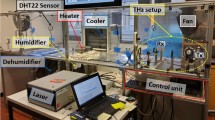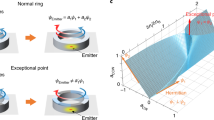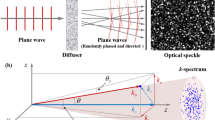Abstract
IT is an established fact that wireless signals transmitted from any place are readily received at the diametrically opposite place on the globe. The explanation usually given of the phenomenon is that the ions in the Heaviside layer make the speed of propagation of the waves greater in that layer than in the ordinary air below and thus bend the waves round the earth by a process of refraction. Larmor has developed the mathematical theory of the refraction (Phil. Mag., December 1924), and has shown that if c is the velocity of light in vacuum and c′ in the presence of electrons, then c and c′ are related by the equationwhere N is the number of electrons per unit volume, e and m are the charge (in e.m.u.) and the mass of an electron, and λ the wave-length. Assuming λ = 105 cm. for radio waves, calculations show that an electron density of 0.3 per c.c. is enough to produce the observed bending round the earth.
This is a preview of subscription content, access via your institution
Access options
Subscribe to this journal
Receive 51 print issues and online access
$199.00 per year
only $3.90 per issue
Buy this article
- Purchase on Springer Link
- Instant access to full article PDF
Prices may be subject to local taxes which are calculated during checkout
Similar content being viewed by others
Author information
Authors and Affiliations
Rights and permissions
About this article
Cite this article
MITRA, S., RAKSHIT, H. Refraction of Light Waves by Electrons. Nature 123, 796–797 (1929). https://doi.org/10.1038/123796b0
Issue Date:
DOI: https://doi.org/10.1038/123796b0
Comments
By submitting a comment you agree to abide by our Terms and Community Guidelines. If you find something abusive or that does not comply with our terms or guidelines please flag it as inappropriate.



